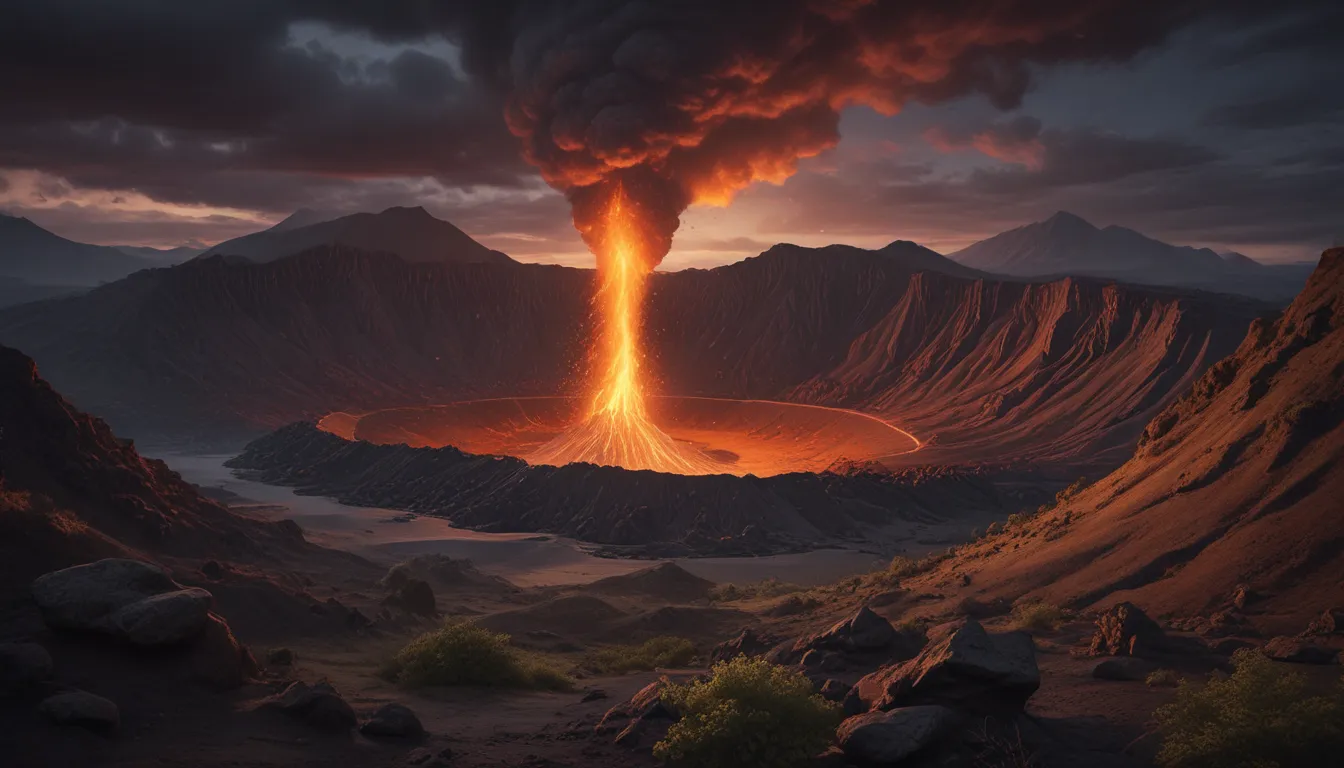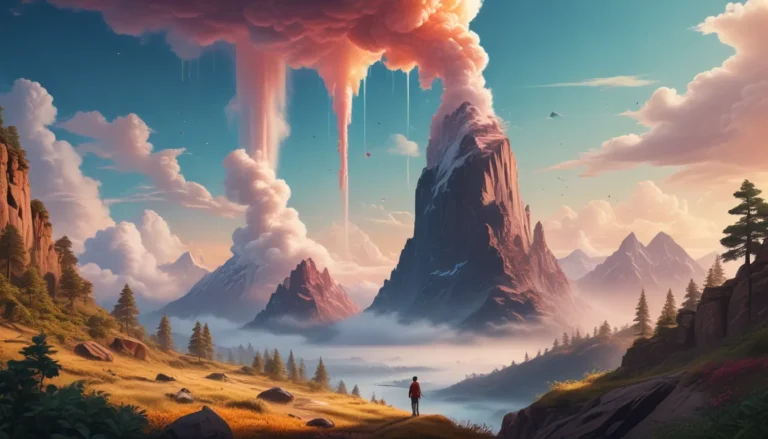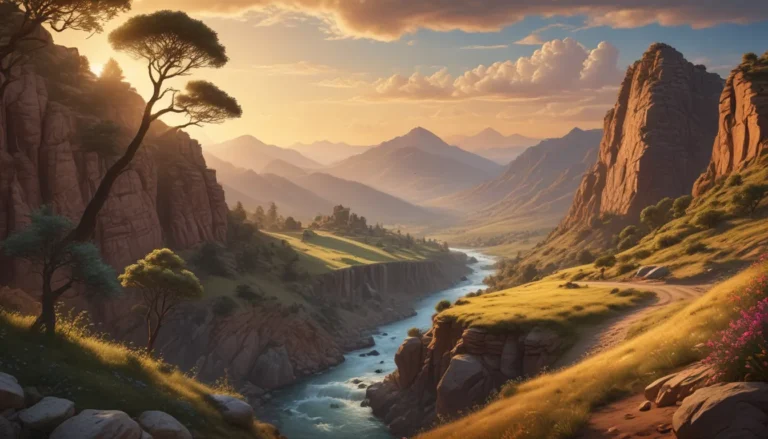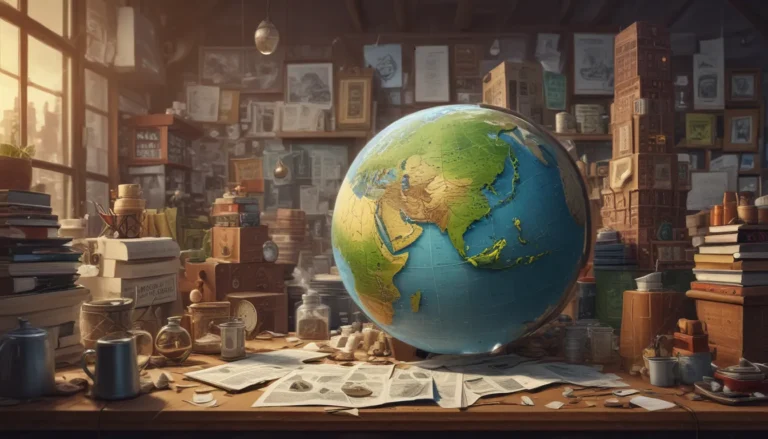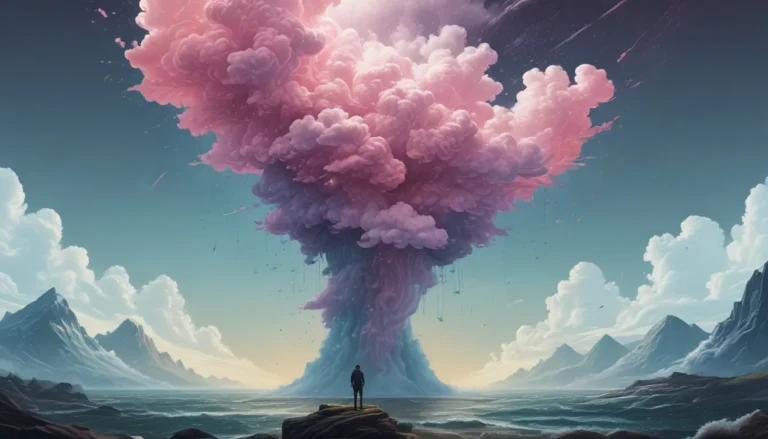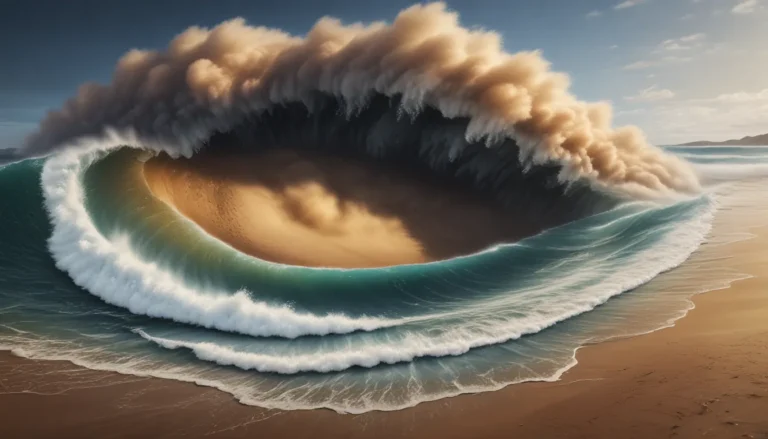A Note About Images: The images used in our articles are for illustration purposes only and may not exactly match the content. They are meant to engage readers, but the text should be relied upon for accurate information.
Are you ready to embark on a journey through the wonders of volcanic craters? These incredible natural formations, shaped by volcanic eruptions, tell a story of Earth’s powerful forces. From their diverse landscapes to their cultural and ecological significance, volcanic craters have intrigued scientists and enthusiasts alike for centuries.
Discovering the Origin of Volcanic Craters
When a volcano erupts, molten rock known as magma rises to the surface, creating a depression at the top of the volcano, forming a volcanic crater.
Exploring the Fascinating World of Crater Lakes
Some volcanic craters are filled with water, forming crater lakes when the volcano becomes dormant or extinct, creating basins that collect rainfall.
Unveiling the Largest Volcanic Crater on Earth
The Ngorongoro Crater in Tanzania, spanning over 100 square miles, is home to a diverse array of wildlife, earning its reputation as the “Garden of Eden.”
Venturing Beyond Earth: Volcanic Craters in Space
Volcanic craters exist not only on Earth but also on celestial bodies like the Moon, where volcanic activity in the distant past created numerous craters.
Journeying to Popular Tourist Destinations: Volcanic Craters
Crater Lake National Park in Oregon, USA, is a prime example of a volcanic crater that has become a popular tourist attraction, drawing visitors from around the globe.
Gaining Insights into Earth’s Geological History
Studying the rocks and sediments within volcanic craters provides scientists with valuable information about past volcanic activity and changes in Earth’s climate over time.
Embracing the Diversity of Volcanic Craters
From small, circular craters to large, irregular-shaped ones, volcanic craters come in various shapes and sizes, each with its unique characteristics.
Unveiling the Phenomenon of Gas Emissions and Steam
Volcanic craters can emit gases and steam, such as sulfur dioxide, which can have environmental and health impacts on surrounding areas.
Resonating with the Memory of Mount Saint Helens
The significant eruption of Mount Saint Helens in 1980 resulted in the collapse of the volcano’s northern flank and the creation of a horseshoe-shaped crater.
Harnessing the Power of Geothermal Energy
Volcanic craters can serve as valuable sources of geothermal energy, with geothermal power plants harnessing heat from underground volcanic activity to generate electricity and provide heat to nearby communities.
Diving into the Depths of Volcanic Craters
The depth of volcanic craters can vary greatly, with some being shallow while others can reach depths of hundreds or even thousands of meters.
Witnessing the Majestic Sunrise at Haleakalā
The volcanic crater known as Haleakalā on the Hawaiian island of Maui is a popular spot for watching the sunrise, offering breathtaking views as the sun emerges over the horizon.
Understanding the Impact of Volcanic Craters on Local Climates
The presence of a large volcanic crater can create a microclimate within the surrounding area, influencing temperature and precipitation patterns.
Embracing Unique Ecosystems within Volcanic Craters
Despite their harsh conditions, some volcanic craters are home to unique ecosystems, where plant and animal species have adapted to thrive in extreme environments.
Celebrating the Cultural and Spiritual Significance of Volcanic Craters
Volcanic craters hold significant cultural and spiritual importance for many indigenous communities, often considered sacred sites imbued with mythological and historical significance.
Conclusion: Unveiling the Marvels of Volcanic Craters
Volcanic craters are not just geological features but windows into Earth’s inner workings, offering valuable insights into the planet’s history and diverse landscapes that continue to captivate our imagination.
Are you ready to explore more of Earth’s geological wonders? Join us on a journey through some of the most remarkable sites our planet has to offer. Buckle up and get ready to immerse yourself in the breathtaking beauty and awe-inspiring landscapes that await you!
FAQs
-
How are volcanic craters formed?
Volcanic craters are formed through volcanic eruptions when magma rises to the surface and causes the overlying terrain to collapse, creating a crater. -
Are all volcanic craters the same?
No, volcanic craters can vary in size, shape, and characteristics, with some being small and bowl-shaped while others are larger and more complex. -
Can volcanic craters be dangerous?
Yes, some volcanic craters can be dangerous as they may emit toxic gases, release ash clouds, or experience sudden eruptions. It’s important to heed warnings issued by authorities. -
Do volcanic craters have ecological importance?
Absolutely! Volcanic craters can create unique ecosystems with specialized flora and fauna, supporting rare and endemic species adapted to the harsh volcanic environment. -
Can you visit volcanic craters?
Many volcanic craters are accessible to visitors, especially those in national parks or protected areas. When visiting active volcanic sites, follow guidelines and safety precautions to ensure a safe experience.
Let’s continue our journey of exploration and discovery, unlocking the mysteries of our planet’s geological wonders one step at a time.
